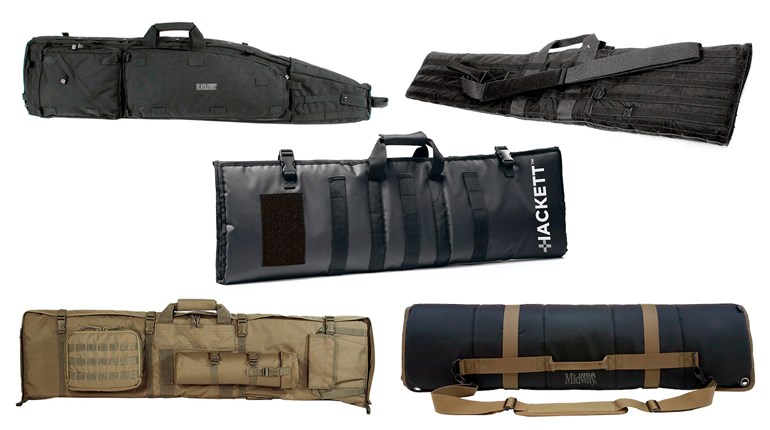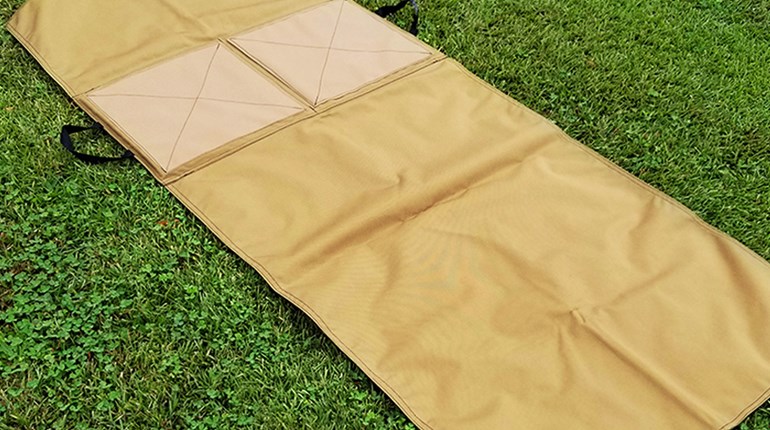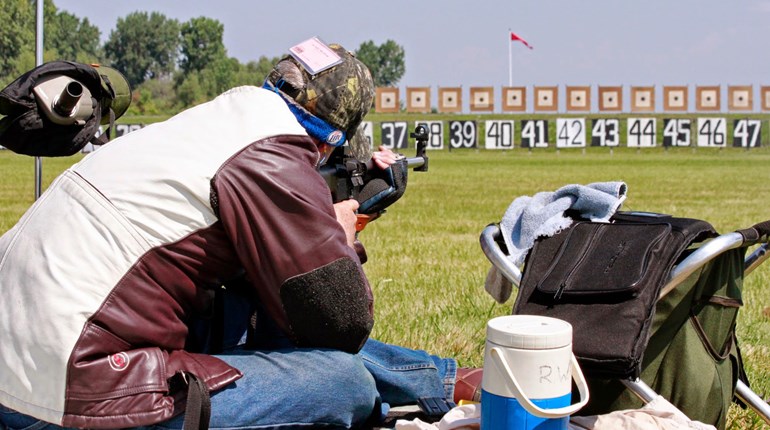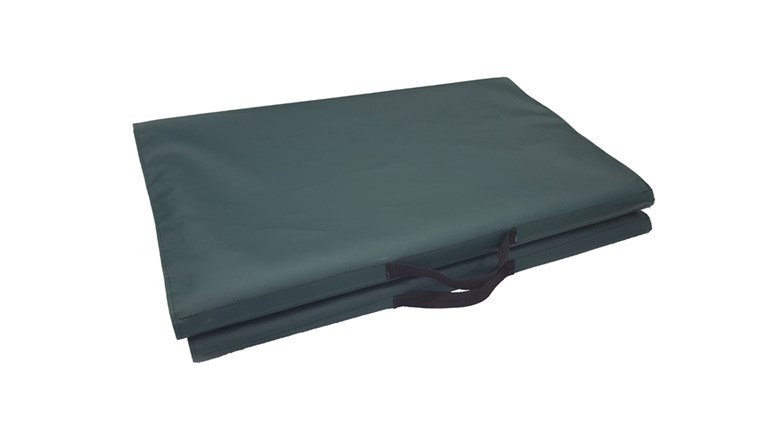
There are few rifle accoutrements that get less attention than the shooting mat. This makes sense on the surface, as rifle shooters who spend all their time at a bench or in a tree stand are unlikely to see value in a pad that is mainly intended for prone work. Likewise, practical shooters who ply their trades in tactical scenarios or dynamic competitions often see shooting mats as impractical, administrative gear. So, why dwell on something that is primarily designed for stationary use on flat ranges? The answer is pretty simple: If you’re serious about shooting well in the widest variety of situations, perfecting your prone-shooting game is important. Practicing comfortably will make fine-tuning your prone-shooting skills more pleasant. Hence, the shooting mat has a purpose. That some mats are equally useful away from static ranges only serves to sweeten the deal.
In the barest-bones configuration, a useful shooting mat should have just enough padding to make rough or rocky ground bearable—any more bulk than that and it’s a mattress. Some form of moisture barrier should be present between your body and whatever lies below. The mat needs to be durable enough to handle hot brass and being thrown, rolled, folded, stepped on, muddied, spilled on, rinsed off and, of course, laid on a few thousand times. While longer is always better for comfort, a mat that’s at least as long as one’s torso will work when minimalism is the order of the day.
Just a Mat
Purpose-built mats should do one thing well: make prone shooting more comfy. The vintage model I was issued as a young Army sniper had a felt pad sewn between canvas on top and a thin, rubberized bottom. It rolled up tight and was great for range work, but it took about two days to dry once it was soaked through and through. Modern versions are lighter, more comfortable and better at shedding water. Most old and new variants have non-skid rubber patches for elbows, bipods and (sometimes) knees. In my experience, they all work well enough.
Not Just a Mat
A wide variety of elaborately designed shooting mats are available with add-ons that can relegate the original function to an afterthought. Useful extras include carry and stow straps, bipod-loading loops and pouches for ammunition, range logs or spotting scopes. Larger models also function as soft rifle cases. One caution though: Going prone on a mat with full pouches or pockets is only slightly more comfortable than lying on padded bricks.
Packs and Drags
Climbing further up the multi-functionality scale brings us to shooting mats that masquerade as backpacks and/or sniper drag bags. The difference is more in the name than the employment because, to be honest, drag bags just plain suck when actually dragged. The majority of my Army career was spent in the sniping world. I had two different drag bags that never went anywhere near a real-world stalk. I did use the smaller of the two on a graded stalk during sniper school—once. It caught on every vine and root that I was able to slide my body over and slowed me down to half a snail’s pace, nearly getting me busted by some very keen-eyed instructors. However, both of my drags made excellent range bags for my rifles and associated gear. One of them was an old-school design from Blackhawk that was great as a three-quarter length shooting mat when I needed a padded case for a short-duration [non-stalking] mission.
Many drag bags and cases that double as shooting mats have modular webbing that allows pouches to be installed where desired. These loops can also be used to anchor camouflage if you feel that the bag doesn’t quite snag on other gear or vegetation as often as you’d like. Here again, only carry what you’re willing to remove when it’s time to shoot. Many models have shoulder straps so they can be worn like a backpack. Unless you plan to use this as a primary pack, look for designs that use thinner, non-padded webbing as straps, so they’ll lay flat when the mat is performing its primary duty.
Field Expedients
Situations that cause you to suddenly need a mat usually include water, rocks or some other inhospitable surface. Fortunately, finding a field-expedient mat shouldn’t be too difficult. While working in mountainous regions, my teammates and I typically carried short, narrow sections of accordion-folded foam cut from compact sleeping mats. They worked well for torso protection when shooting prone and were small enough to strap to our rucks for carry. A soft-sided gun case (with empty pockets) works if it can be unzipped and laid flat. In spongy or swampy areas, a tarp or rain poncho will serve as a short-duration bottom barrier. I’ve used all sorts of coats, too, whatever it takes to keep the odd rock protrusion or root from digging into my ribs and elbows. Even a piece (or two) of cardboard will provide some relief over rough surfaces.
A basic shooting mat can be had for less than the cost of a box of centerfire ammo. Prices range from less than $30 for MidwayUSA’s Competition Shooting Mat to around $250 for Voodoo Tactical’s Premium Deluxe Shooting Mat or $305 for Blackhawk’s Long Gun Sniper Drag Bag. Notables to check in between those bookends include Hackett’s Rifle Burrito Slim Backpack & Shooting Mat ($100) and Blackhawk’s Stalker Drag Mat ($178). The latter model is an improvement over the one I was issued, eventually purchased and still use today as both a backpack carrier and mat. A simple search for “rifle case shooting mat” should help round out your wish list for Santa this Christmas season.








































